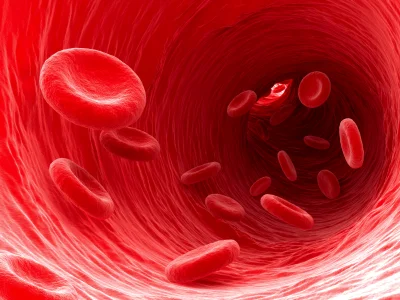A pulmonary embolism is a serious complication that can occur during pregnancy. In such a situation, it is important to recognise the condition quickly and provide appropriate treatment. What are the symptoms of pulmonary embolism during pregnancy and how is it treated?
What is a pulmonary embolism?
Pulmonary embolism is a serious condition that is associated with an obstruction or narrowing of the pulmonary vessel caused by embolic material. This is usually a thrombus originating from the veins of the lower extremities. A pulmonary embolism can also be caused by an air embolism, a fat embolism or an embolism caused by amniotic fluid. However, these cases are much rarer. The most common pulmonary embolism is associated with a venous thrombosis.
Read also: Venous thromboembolism during pregnancy
What are the symptoms of pulmonary embolism during pregnancy?
Pregnant women are at risk of suffering a pulmonary embolism due to the increased risk of thrombosis during pregnancy and the postpartum period. The symptoms of a pulmonary embolism often occur suddenly and make it necessary to consult a doctor as soon as possible in order to initiate appropriate treatment.
The symptoms of pulmonary embolism during pregnancy include:
- Shortness of breath
- Cough
- Coughing up blood
- Chest pain
- Fainting
It is known that in around a third of cases, the symptoms of deep vein thrombosis, such as calf pain, especially when walking, or swelling of the limb, can be recognised before a pulmonary embolism occurs.
In laboratory tests, the concentration of D-dimers will be elevated in the event of an embolism. However, it is worth noting that the concentration of this protein is “naturally” elevated during pregnancy, so the result should be related to the symptoms of the expectant mother.
Treatment of pulmonary embolism during pregnancy
The preferred treatment for pulmonary embolism during pregnancy is low-molecular-weight heparin (e.g. Clexane). The dose of heparin should be therapeutic rather than prophylactic. The doctor will adjust it according to the pregnant woman’s weight. During pregnancy, fibrinolytic treatment is a last resort, as it can lead to serious complications for the child. However, the decision on treatment is made on a case-by-case basis and depends on the symptoms, the woman’s condition and the test results.
Prevention of pulmonary embolism during pregnancy
A history of venous thrombosis or pulmonary embolism is a serious risk factor for the recurrence of venous thrombosis during pregnancy. For this reason, an injection of low-molecular-weight heparin is recommended during pregnancy for women at high risk of these vascular complications. Prophylaxis should also be continued in the six weeks after delivery, as the risk of thrombosis is even higher during this period than during pregnancy.











